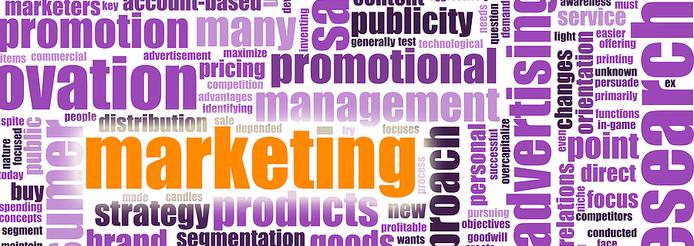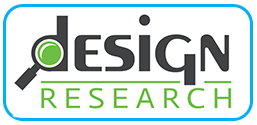“I found your Assortment Styler information last year was very valuable to us as a mid-sized company, like none that I have come across in my experience of working in the industry. I look forward to the new edition.”

Or A Complex Challenge?
When I was in college I had an economics professor who wrote off marketing as “a painful elaboration of the obvious”. That got a laugh from a classroom full of business majors and it’s a line I always remembered. In those days, marketing was much easier than it is today. It consisted mostly of preparing new products for salespeople to put in front of retailers and letting them do the rest. There were few channels of distribution, many fewer retailers, and advertising was limited to print, radio or television. What a difference a few decades has made.
Today, marketers must have communications strategies that work through many channels to consumers from conventional media to social media. Marketers need to have products that fit multiple retail channels and multiple retailer needs. Marketing support must happen at the national level supporting national chains and it must happen at the individual consumer level responding to specific product inquiries, both of which must happen very quickly in order to not alienate customers or consumers. Just the operational requirements to work with many retailers are nightmarish. And Amazon expects you to deliver directly to consumers nearly overnight. Yikes! There are so many opportunities for things to go wrong that its hard to imagine them going right. But it happens every day. Every time we place an online order, we have an expectation of receiving the product we wanted in a timely, efficient manner.
How can research facilitate marketing? How can research eliminate some of the pain?
Marketing is a cradle to grave responsibility. Marketing research is a set of cradle to grave tools.
Here is a guide to how research can help at every stage:
EARLY STAGE MARKET STUDIES (generally prior to actual product development but also useful at any time):
- ATTITUDE, AWARENESS AND USAGE STUDIES – What do consumers think about the products they use? How often do they use them? Who uses them? Why and when? Do they like the products they use? Would they like to see improvements to them? How, when and where do they shop for the category? What are their purchase decision criteria?
- CONSUMER PROFILE STUDIES – Who purchases the category? Who purchases your brand? How do they differ? What are their demographic and lifestyle characteristics? How do your consumers differ from consumers of other brands? How can you capture consumers you don’t currently sell to?
- MARKET SEGMENTATION STUDIES – Markets generally segment into submarkets based on price, design, functionality and usage patterns. What segments do your products participate in? What portion of the market does that represent? What are the needs and wants of segments that you don’t currently participate in? Could you grow your share by addressing those needs too? Are there unmet needs that you could answer and grow your share that way?
- BRAND AWARENESS AND BRAND EQUITY STUDIES - What percentage of the market is aware of your brand? Who are they? Why are they aware of your brand? Do they buy your brand? What does your brand mean to them? How do they perceive your brand? Is there an opportunity to improve perceptions of your brand? Is there an opportunity to reposition your brand to capture a greater share of market?
- LICENSING AND BRANDING STUDIES - Considering a sub-brand or license for a collection of new products? We weed out the wrong partners, identify the right ones, that offer the highest growth potential while minimizing cannibilization of your current brand(s).
PRODUCT DEVELOPMENT STUDIES
- ETHNOGRAPHIC/IMMERSION STUDIES – These are deep dives into consumers’ lifestyles with the purpose of studying their usage of a specific product category. We generally go into their homes and observe them using the products in question. We ask questions as they work. Why did they buy this product? Does it do the job for them? What do they love or hate about this product? What would they change?
- CONCEPT TESTING – You’ve come up with some product ideas. How good are they? Are compelling enough for consumers to purchase them? How are they versus existing products? The same or better? What would make them even better? This is early stage product research that defines the viability of new product ideas.
- DESIGN TESTING – Often done in conjunction with concept testing, this is research to test if the product is visually and functionally appealing. All products that are on display in the home need to be visually appealing. Features such as color or shape can enhance or limit purchases if they are not right. Similarly, the color may be right but the functionality may be wrong. Design testing assures that appearance AND functionality are maximized.
- PRICING STUDIES - Everything is ready to go. A promising new product is ready for launch. What’s the right price? All too often products are priced to market and not to demand. Consumers expect to pay more for better quality, better features and better brands. Use pricing research to make sure you are optimally priced. We’ve saved companies from leaving dollars on the table.
- IN-HOME PRODUCT TESTING – You have a product ready to go, but will consumers understand how to use it? Will they have problems understanding it? Will they have problems understanding the instructions or controls? Will they be happy with the results when they use it? Let us place prototypes of your new product in homes and monitor their use. We’ll set up usage diaries and we’ll identify the problems they encounter and we’ll give you all the glowing reviews they write to share with your retailers when you sell the product in.
- NEW PRODUCT BRAINSTORMING SESSIONS - These can be conducted either on-site or off-site. We provide an abundance of macro and micro market trends and consumer trends, customized for your brand and product category, and use both small group and large group exercises to propel new and innovative product ideas.
PRODUCT SUPPORT STUDIES
- PACKAGING STUDIES – Have you ever stood in a store with a package in your hands wondering if it does something? Packaging messages are the single most important communications mechanism you have. They are the closest the consumer gets to the product. They must communicate what the consumer needs to know. Packaging studies test that. They identify how well the packaging communicates what consumers want to know.
- ADVERTISING and COMMUNICATIONS TESTS – What does or should your advertising say? Does it say it effectively? Do consumers understand your advertising? Do they get the message? Do they care about the message, is it compelling? Is it believable? Is it informative? Does it position your brand in a positive light? Does it sell your products? Is it better than any previous advertising you’ve had? Is it better than competitive advertising?
What next? Your product is in the market, all aspects of it have been tested, it is selling well. What’s next? Starting the process all over again, of course, because the pressure to fill the new product stream never ends. Marketing, is truly an elaboration – but with research insights, the elaboration becomes painless.
Call or email us today to learn more about assuring success in your product development and marketing strategies. 609.896.1108 Rick@designres.com



